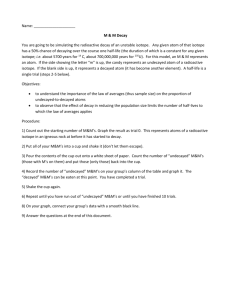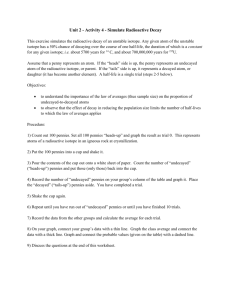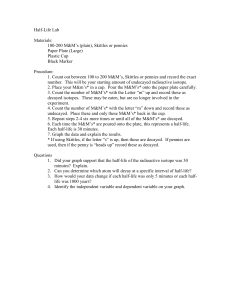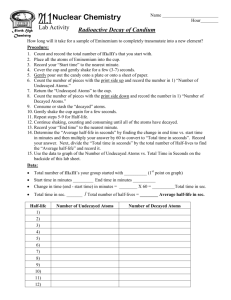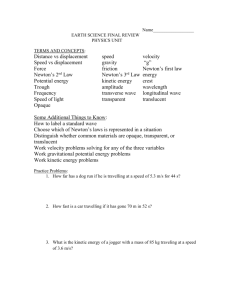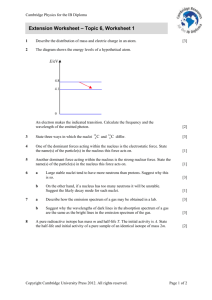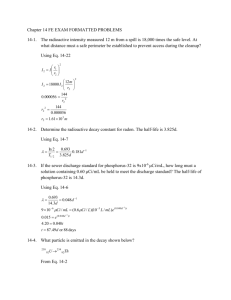M&M Decay Modeling
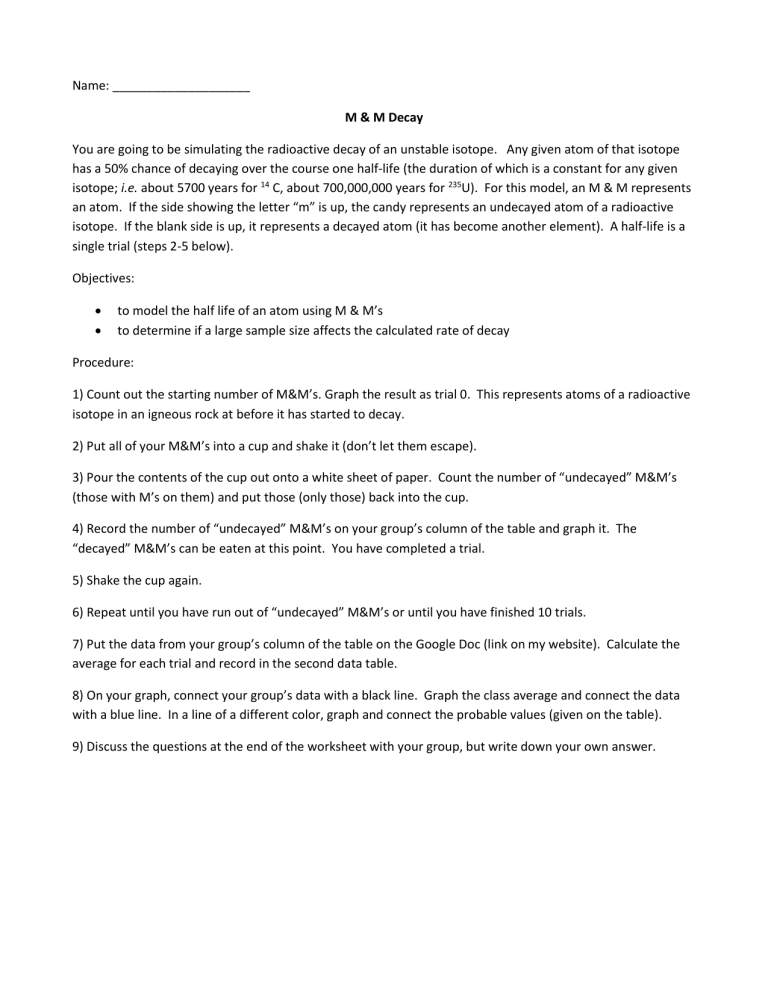
Name: ____________________
M & M Decay
You are going to be simulating the radioactive decay of an unstable isotope. Any given atom of that isotope has a 50% chance of decaying over the course one half-life (the duration of which is a constant for any given isotope; i.e. about 5700 years for 14 C, about 700,000,000 years for 235 U). For this model, an M & M represents an atom. If the side showing the letter “m” is up, the candy represents an undecayed atom of a radioactive isotope. If the blank side is up, it represents a decayed atom (it has become another element). A half-life is a single trial (steps 2-5 below).
Objectives:
to model the half life of an atom using M & M’s
to determine if a large sample size affects the calculated rate of decay
Procedure:
1) Count out the starting number of M&M’s. Graph the result as trial 0. This represents atoms of a radioactive isotope in an igneous rock at before it has started to decay.
2) Put all of your M&M’s into a cup and shake it (don’t let them escape).
3) Pour the contents of the cup out onto a white sheet of paper. Count the number of “undecayed” M&M’s
(those with M’s on them) and put those (only those) back into the cup.
4) Record the number of “undecayed” M&M’s on your group’s column of the table and graph it. The
“decayed” M&M’s can be eaten at this point. You have completed a trial.
5) Shake the cup again.
6) Repeat until you have run out of “undecayed” M&M’s or until you have finished 10 trials.
7) Put the data from your group’s column of the table on the Google Doc (link on my website). Calculate the average for each trial and record in the second data table.
8) On your graph, connect your group’s data with a black line. Graph the class average and connect the data with a blue line. In a line of a different color, graph and connect the probable values (given on the table).
9) Discuss the questions at the end of the worksheet with your group, but write down your own answer.
Data Table:
Run
Class Data Table:
5
6
7
8
9
10
0
1
2
3
4
Run
Group
Class Average
6
7
8
9
10
0
1
2
3
4
5
Discussion Questions:
1) Why didn’t each group get the same results?
2) What do the probable values represent?
100
50
25
12.5
6.25
Probable Value (Percentage)
3.125
1.56
0.78
0.39
0.19
0.098
100
50
25
12.5
6.25
3.125
1.56
0.78
0.39
0.19
0.098
Probable Value (Percentage)
3) Which line, the class average or your group’s results, most resembles those of the probable values? Why?
4) Why don’t we use carbon dating for dinosaur bones? (Hint: The half-life of carbon is 5730 years)
